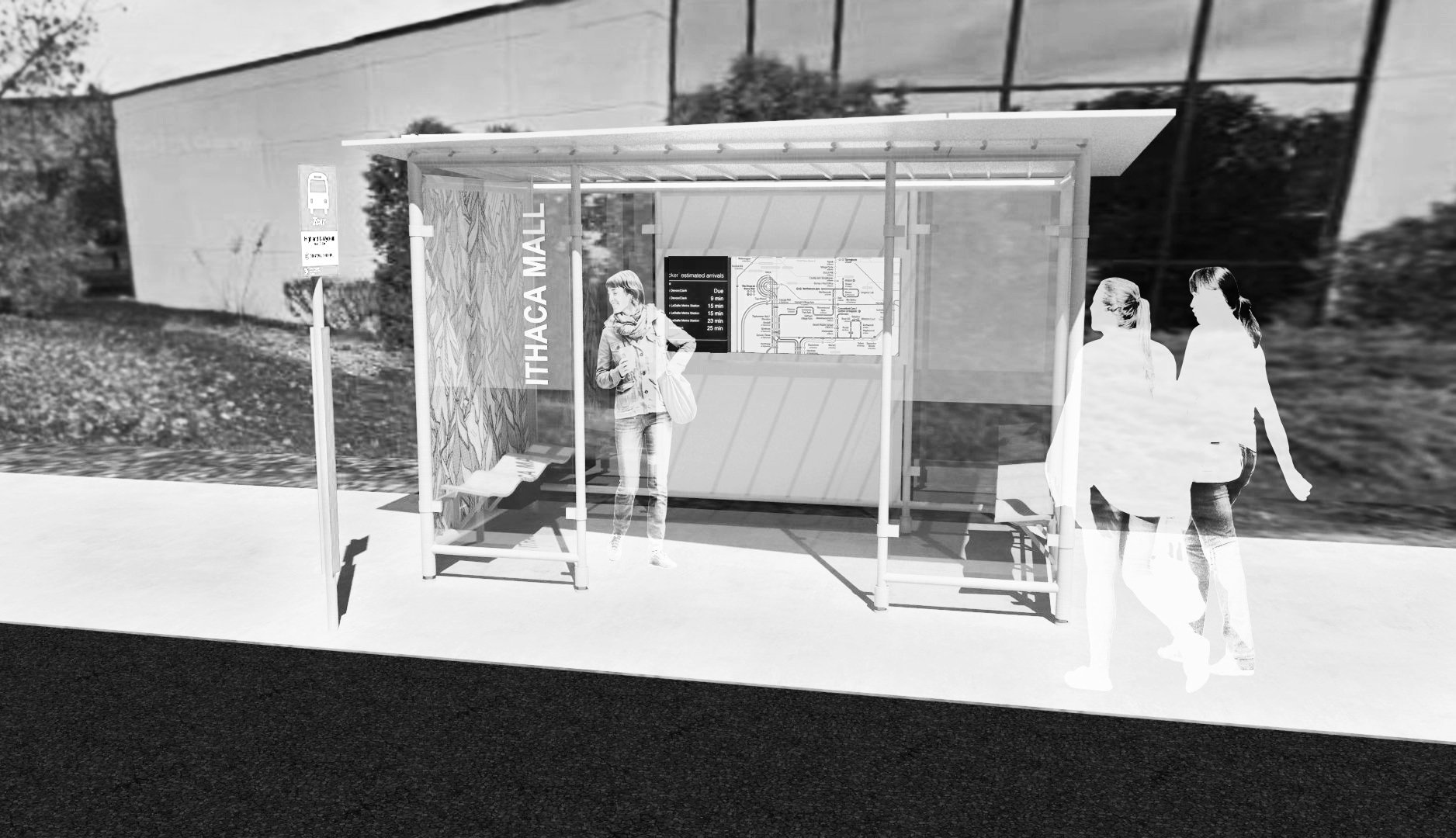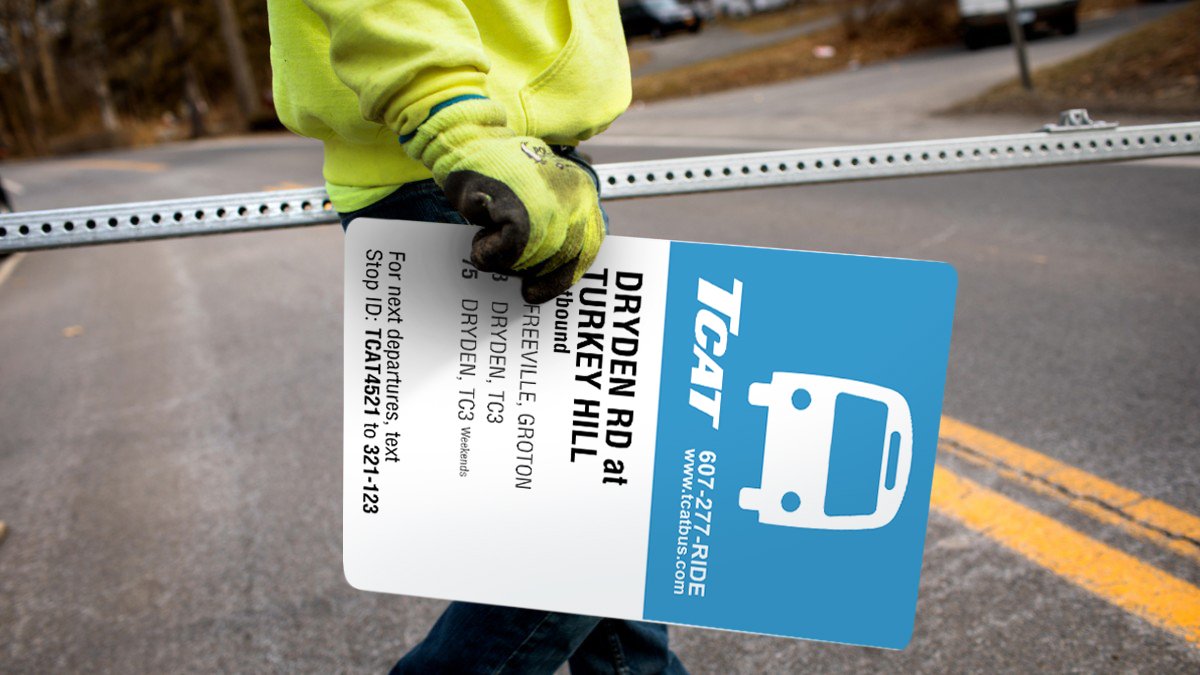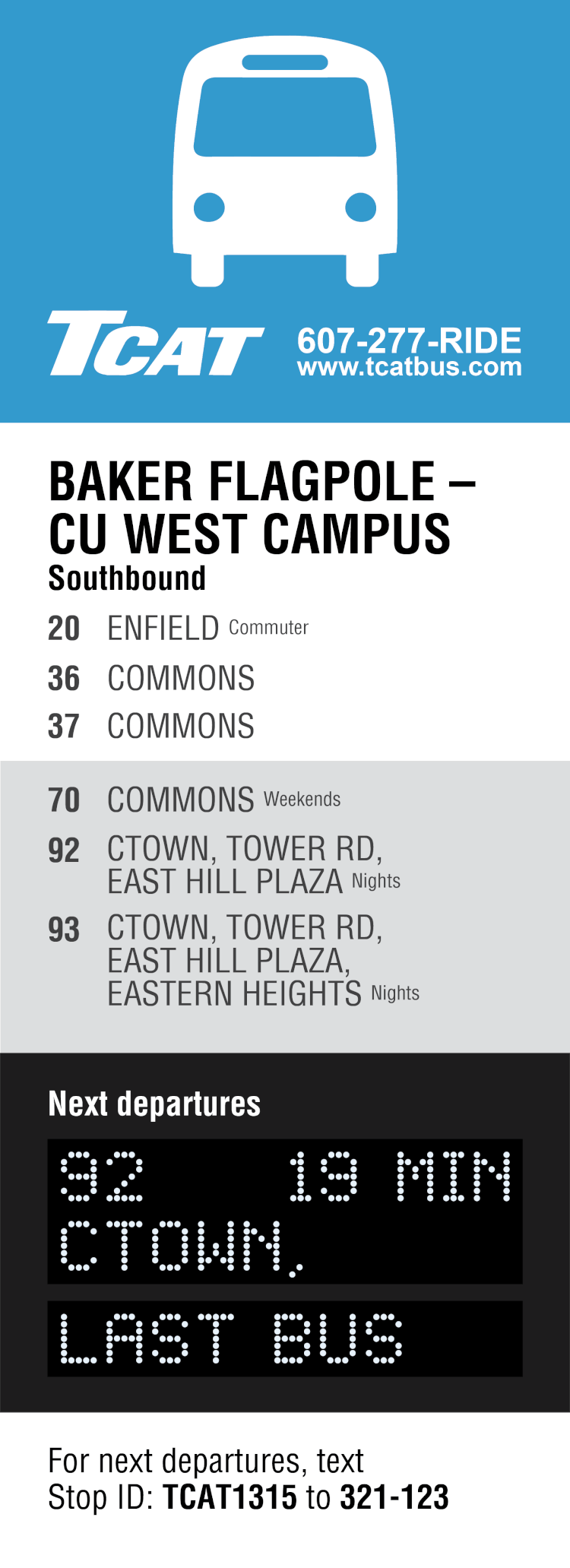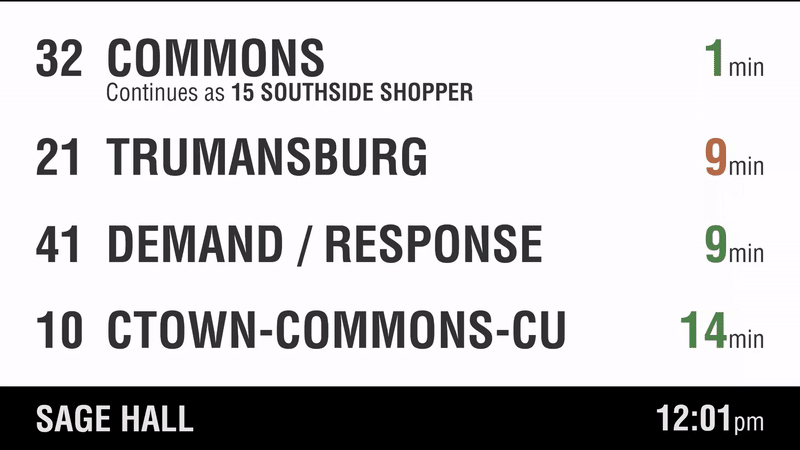
Improving the rider experience
TCAT wanted to improve their rider experience to best serve Tompkins County, increase ridership, and set a standard for urban-to-rural transit.
Using a systems design thinking approach, our interdisciplinary team tackled a variety of issues and opportunities for Tompkins Consolidated Area Transit (TCAT). In particular, we focused opportunities in information & wayfinding, as well as the overall passenger experience, bus shelters, and route network planning.

Information was a key issue for riders
“I was standing next to the sign, but I wasn’t sure if [the bus] had come already so I waited. My friend started texting me when the bus drove right past me. I bought a car the next day!”
-A frustrated international grad student
Transit should empower
TCAT riders enjoy, and want to feel independent and in-control when using transit. But without sufficient information, they might find themselves in a situation leaving them lost, helpless, and embarrassed. Negative experiences like these discourage ridership!
People stick with what they know
Riders felt most confident sticking to familiar schedules and routes. We spoke to someone waiting for a specific bus—but another, also traveling her way, was boarding right in front of her! TCAT can delight riders by showing that they have more, better options than they think.
Dynamic information, please
Students were especially frustrated by the lack of accurate, live, dynamic and digital information. "Why can't we look it up on Google Maps? I need to know now." At the time, TCAT’s Google Maps integration wouldn’t roll out for another five years.
TCAT’s existing wayfinding was convoluted at best, and nonexistent at worst.
We developed a signage kit-of-parts
-
One size does not fit all: TCAT's stops include everything from downtown transit hubs to poles on rural highways.
As such, different stops would combine sign parts of various function and size to create consistent, but contextually-tailored signs.
For example, a major transfer point on campus may include more information about routes, connections, and nearby destinations. Meanwhile, a low-traffic rural stop may just need a sign for identification and a reflective strip for visibility.
-
• Each sign would be led with a "this is a TCAT bus stop" section, featuring universal symbols and TCAT branding.
• This was followed by the stop name and ID. Below, the sign lists services at that stop; the modular design adapts to the varying number of routes per stop.
• Actionable information (e.g. “text for ETA”) appears at the bottom.
-
Previously, we learned that riders preferred a simpler information system. At stops that are complex yet unable to support a full information screen, we proposed an LED matrix countdown module that’s part of the sign.
Dynamic signage
Able to provide more information than a static sign, supplemental dynamic displays can
Fulfill the need for real-time bus arrival information,
Elaborate on connections and other service details, and
Provide tidbits of information to familiarize people–especially students–with the Ithaca area.
Interactive information kiosks
We prototyped and tested info kiosks that can help riders plan their trip, check real-time bus arrivals, and contact TCAT for assistance.
To promote serendipitous interactions and exploration of Ithaca, we experimented with a “fortune cookie” feature that shares Ithacan trivia and pre-made trip plans to various landmarks and trails.
Maps
Following the model of metros, we drew up simplified diagrams of TCAT’s services. Based on user testing, we proceeded with a hybrid metronized-geographic approach.

After handoff, TCAT’s team made final adjustments and implemented 500+ new signs—bringing consistency, clarity, and detail to the system.
4 M
The public's reaction was encouragingly positive; locals especially enjoyed the inclusion of stop numbers, location, and route information.
And, in 2018, TCAT’s ridership crossed 4 million–helped in part by the new information systems.
In collaboration at Cornell University Sustinable Design.



























